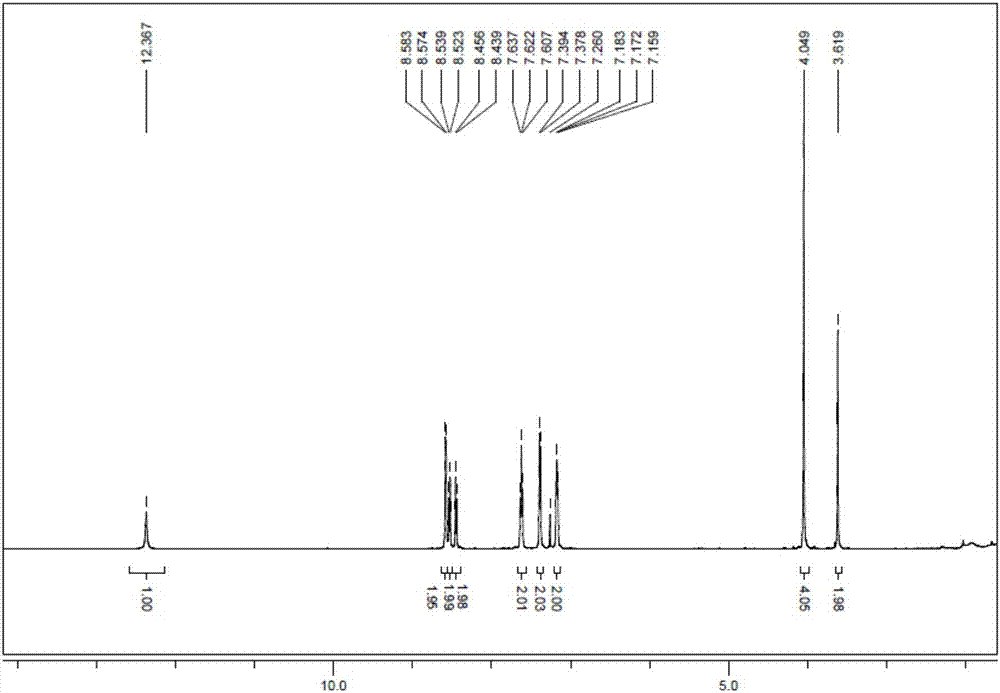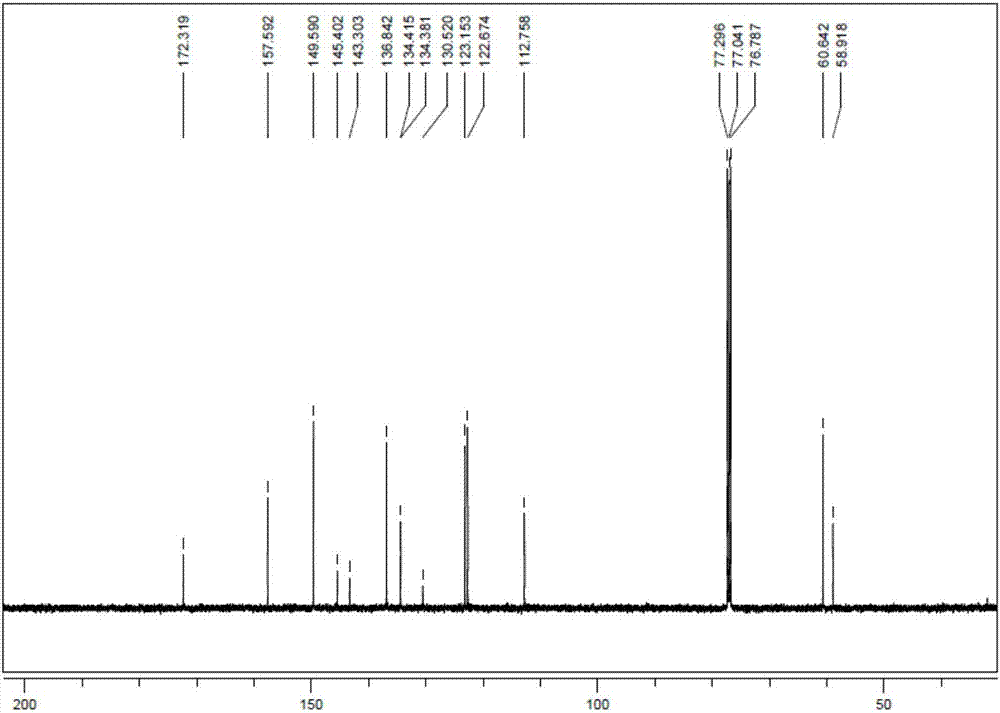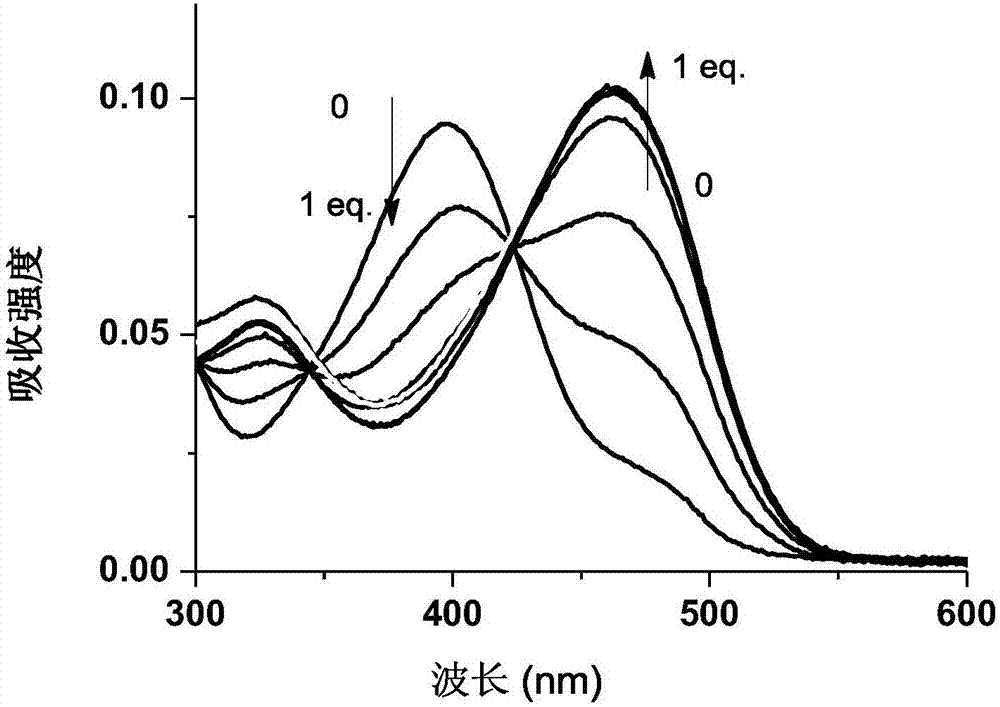Cadmium ion fluorescence probe, preparation method and applications thereof
A fluorescent probe, cadmium ion technology, applied in fluorescence/phosphorescence, chemical instruments and methods, luminescent materials, etc., to achieve the effect of simple synthesis route, simple and convenient post-processing, and good photostability
- Summary
- Abstract
- Description
- Claims
- Application Information
AI Technical Summary
Problems solved by technology
Method used
Image
Examples
Embodiment 1
[0038] Embodiment 1: The basic synthesis process of cadmium ion fluorescent probe is as follows:
[0039] (1) Synthesis of intermediate 4-amino-7-nitrobenzoxadiazole: 400 mg (1 mmol) of 4-chloro-7-nitrobenzoxadiazole was dissolved in 20 mL of methanol, and 4 mL of 28 wt.% ammonia was added at room temperature aqueous solution. The reaction solution was reacted at room temperature for 24 hours under the protection of nitrogen. After the reaction was completed, the reaction solution was spin-dried, and the crude product was separated with a silica gel column. The eluent was petroleum ether: ethyl acetate 1:1, and 194 mg of a brown solid was obtained with a yield of 54%.
[0040]
[0041] (2) Synthesis of intermediate 2-chloro-N-(7-nitrobenzoxadiazole-4-) amide: 194mg (1.08mmol) 4-amino-7-nitrobenzoxadiazole and 171mg (1.40mmol ) 4-dimethylaminopyridine was dissolved in 20 mL of dry dichloromethane, and the solution was stirred in an ice bath. 146 mg (1.30 mmol) of 2-chlor...
Embodiment 2
[0046] Fluorescent probe 4 prepared in embodiment 1 is to the absorption titration of cadmium ion
[0047] 0.0042g of probe 4 was dissolved in 5mL DMSO to prepare a 2mM stock solution. Make a 10μM solution with HEPES (pH=7.4), gradually add 2mM Cd(ClO 4 ) 2 solution. Test for changes in its absorption. The result is as image 3 shown.
Embodiment 3
[0049] Fluorescence response titration of fluorescent probe 4 prepared in Example 1 to cadmium ions
[0050] 0.0042g of probe 4 was dissolved in 5mL DMSO to prepare a 2mM stock solution. Make a 10μM solution with HEPES (pH=7.4), gradually add 2mM Cd(ClO 4 ) 2 solution. Test for its fluorescence change. (The excitation wavelength is 468nm, the slit [5,5].) The results are as follows Figure 4 shown.
PUM
 Login to View More
Login to View More Abstract
Description
Claims
Application Information
 Login to View More
Login to View More - R&D
- Intellectual Property
- Life Sciences
- Materials
- Tech Scout
- Unparalleled Data Quality
- Higher Quality Content
- 60% Fewer Hallucinations
Browse by: Latest US Patents, China's latest patents, Technical Efficacy Thesaurus, Application Domain, Technology Topic, Popular Technical Reports.
© 2025 PatSnap. All rights reserved.Legal|Privacy policy|Modern Slavery Act Transparency Statement|Sitemap|About US| Contact US: help@patsnap.com



